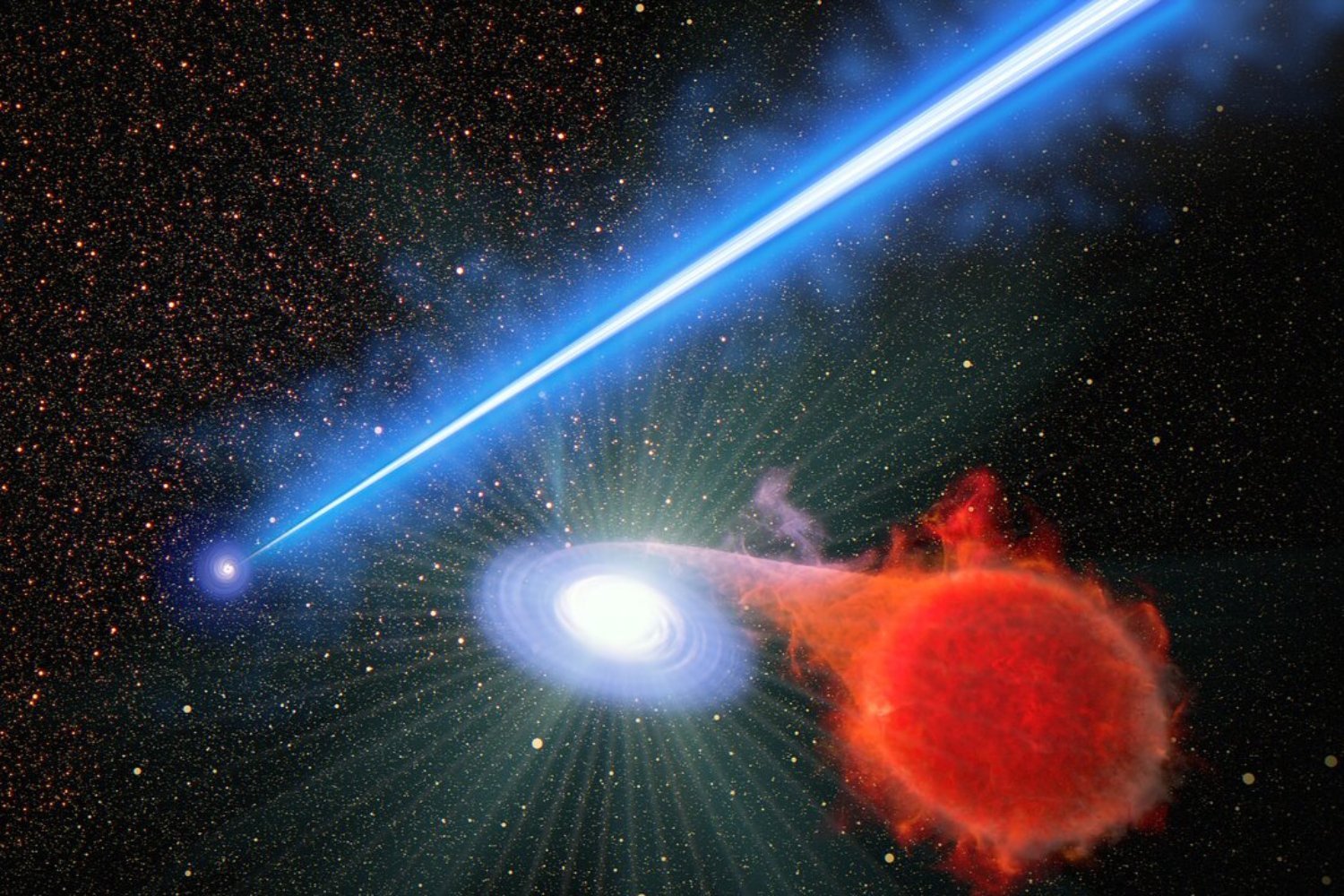- cross-posted to:
- astronomy@mander.xyz
- cross-posted to:
- astronomy@mander.xyz
Black hole jets, which spew near-light-speed particle beams, can trigger nearby white dwarf stars to explode by igniting hydrogen layers on their surfaces. “We don’t know what’s going on, but it’s just a very exciting finding,” said Alec Lessing, an astrophysicist at Stanford University and lead author of a new study describing the phenomenon, in an ESA release. Gizmodo reports:
In the recent work – set to publish in The Astrophysical Journal and is currently hosted on the preprint server arXiv – the team studied 135 novae in the galaxy M87, which hosts a supermassive black hole of the same name at its core. M87 is 6.5 billion times the mass of the Sun and was the first black hole to be directly imaged, in work done in 2019 by the Event Horizon Telescope Collaboration. The team found twice as many novae erupting near M87’s 3,000 light-year-long plasma jet than elsewhere in the galaxy. The Hubble Space Telescope also directly imaged M87’s jet, which you can see below in luminous blue detail. Though it looks fairly calm in the image, the distance deceives you: this is a long tendril of superheated, near-light speed particles, somehow triggering stars to erupt.
Though previous researchers had suggested there was more activity in the jet’s vicinity, new observations with Hubble’s wider-view cameras revealed more of the novae brightening – indicating they were blowing hydrogen up off their surface layers. “There’s something that the jet is doing to the star systems that wander into the surrounding neighborhood. Maybe the jet somehow snowplows hydrogen fuel onto the white dwarfs, causing them to erupt more frequently,” Lessing said in the release. “But it’s not clear that it’s a physical pushing. It could be the effect of the pressure of the light emanating from the jet. When you deliver hydrogen faster, you get eruptions faster.” The new Hubble images of M87 are also the deepest yet taken, thanks to the newer cameras on Hubble. Though the team wrote in the paper that there’s between a 0.1% to 1% chance that their observations can be chalked up to randomness, most signs point to the jet somehow catalyzing the stellar eruptions.



This is an incomplete understanding of modern physics. Hawking radiation isn’t jets. Hawking radiation is when subatomic particles pop into existence and one is below the event horizon and can’t escape or anhillate and the other is above the event horizon and flies away which causes a loss of mass in the black hole due to conservation of energy.
We aren’t currently sure if micro black holes evaporate or can reach equilibrium at planck scales. Also we haven’t made any black holes at the LHC. You would need something like 10 billion times more energy for the LHC to form black holes.
I don’t believe that’s correct. At least, the last time I looked into it, the sources I looked at specifically said that version is oversimplified to the point of just being wrong.
What source are you referring to? I’d like to read it as that would contradict everything I’ve ever read on hawking radiation.
The Wikipedia article kind of alludes to it, but this article by John Baez pretty much comes out and says the virtual particle explanation makes no sense.
The virtual particle explanation is wrong because it implies that virtual particles have a negative mass density on one side and a positive mass density on the other, and that by some unexplained mechanism the negative half of that mass density falls into the black hole more commonly than the positive mass density. This is the opposite of what you would expect, as negative mass would have negative acceleration, and would fall AWAY from the gravitational pull of the black hole, not towards it. This is simply not how virtual particles work. This explanation is mistakenly treating virtual particles as classical objects, rather than a phenomenon that is predicted by quantum field theory.
The real explanation is above my paygrade to describe, but it is a phenomenon related to the Casimir effect, where the space between the metal plates is analogous to space time existing after the creation of the event horizon.